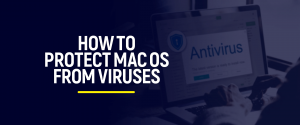

Get 93% OFF on Lifetime
Exclusive Deal
Don’t miss out this deal, it comes with Password Manager FREE of cost.
Get 93% off on FastestVPN and avail PassHulk Password Manager FREE
Get This Deal Now!By Nick Anderson No Comments 5 minutes
If you have been told that Apple’s Mac can’t or don’t get computer viruses, then this blog is for you. There is a leading notion that only Windows PC can be infected with viruses, but that is not correct. Although the infection rate on Windows is much higher, Macs are not safe, which is why it’s important to take preventive measures and install defenses to tackle this digital threat.

This blog is special not because it will guide you on the steps to protect your computer, but also reveal how the Mac operating system is not invulnerable.
The first thing that needs to be understood is that virus is not the right term to carry in context. Malware refers to malicious software, and a virus is a part of it; there are several other types of malware. You can learn all about malware on our blog.
When we talk about Macs, we refer to the macOS, which is the software that powers a range of computers produced by Apple. There are advocates on both camps; Windows and macOS. Windows is much more popular, hence why cases on Windows are higher, as hackers devote resources to the dominant platforms.
OSX.Proton is a malware on Macs that wreaked havoc by stealing the administrator credentials. Because it had administrator credentials, it could peek inside the Key Chain; the password manager that stores all your credentials for easy access.
The malware emerged again as a Trojan in 2017 when a fake Symantec blog was published on the internet. The fake blog was near-identical to the real blog of Semantic and distributed a malware detector, which was a trojan horse for Proton. A Trojan is a type of malware that appears to be a legitimate program, but the underlying code’s purpose is to infect your system. Trojan horses are usually used to install backdoors in a system.
Adware.NewTab is an adware that affects macOS and originated in 2018. Adware is a type of malware that bombards you with advertisements. The attacker gains revenue every time you see the ad or click on it. Adware is considered harmless but can be very intrusive to your web browsing experience.
Proton is just one example of a Mac malware; there are more and on the rise. According to a report by AV-Test, malware on Mac has seen an upward trajectory year after year. The year 2018 witnessed the most development with 93,000+ new malware on Macs. And as per Malwarebytes’ research, 270 percent unique threats were discovered by the end of 2017 when compared to the prior year.
Whether it’s PC or Mac, malware-infected computers exhibit the same symptoms. Remember that malware is a piece of code that is written to alter or interfere with the normal operations of the system. So, if you use your system daily, you should be able to see some signs.
Regardless of what device you own, the need to stay ahead of the traps attackers’ position for you is everything that you’ll need to stay protected. Vulnerabilities may exist in the hardware or software that can allow attacks to happen despite your best attempts. But, it should not deter you from adopting certain practices and also stay vigilant against phishing attempts.
There should be plenty of evidence in the blog to make you realize that Mac isn’t the haven that it’s marketed to be – not anymore. Irrespective of the amount of malware present versus Windows, it’s out there, and building a solid defense is the need of the hour.
© Copyright 2024 Fastest VPN - All Rights Reserved.


Don’t miss out this deal, it comes with Password Manager FREE of cost.
This website uses cookies so that we can provide you with the best user experience possible. Cookie information is stored in your browser and performs functions such as recognising you when you return to our website and helping our team to understand which sections of the website you find most interesting and useful.
Strictly Necessary Cookie should be enabled at all times so that we can save your preferences for cookie settings.
If you disable this cookie, we will not be able to save your preferences. This means that every time you visit this website you will need to enable or disable cookies again.


